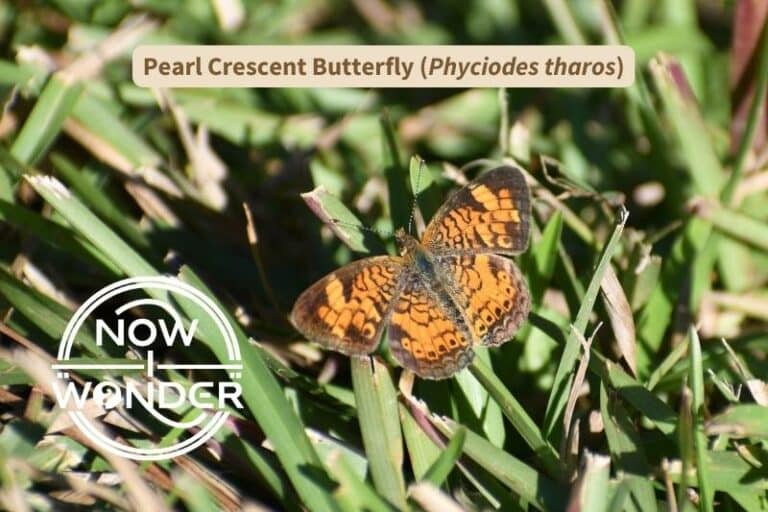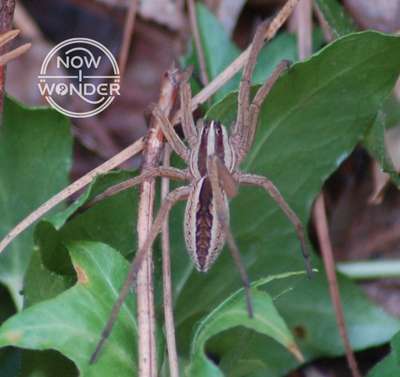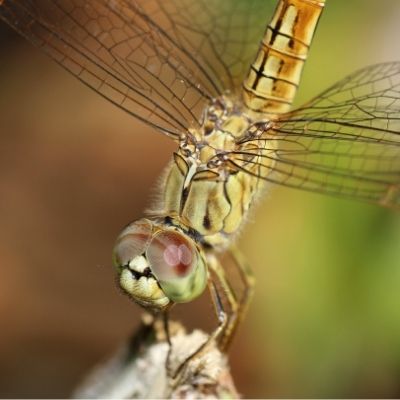Jumping spiders belong to a unique family of arachnids which evolved over millions of years to have incredibly good vision. These spiders see so well, their vision is nearly unrivaled in the invertebrate world. This post is the second in a series about jumping spiders and focuses on how they see so well.
How well do jumping spiders see?
Jumping spiders have acute vision and can resolve details like color, shape, and details within 30 cm (11.8 in). They can sense movement within a 360 degree field of view at distances up to 3 meters (9.8 feet) (Shepeleva 2022), despite the largest species growing only to approximately 25 mm (1 in).
Jumping spiders – also known as salticid spiders – have the best vision of the spider order Araneae and excellent vision even as compared to other non-arachnid species. Read on for details about how their eyes work.
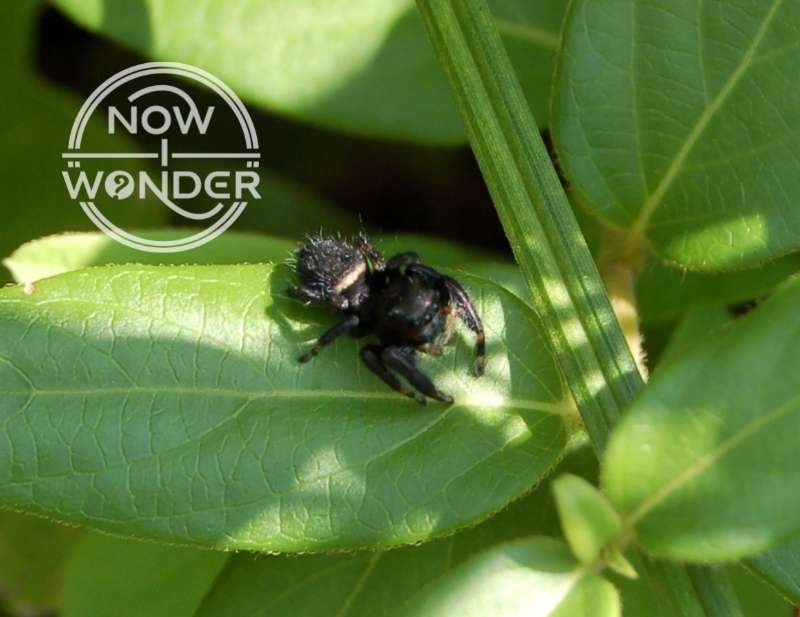
Most jumping spiders are diurnal, meaning they live and hunt during the day when there is plenty of contrast between bright light and dark shadow. Jumping spiders rely on vision to locate prey, navigate their environments, and spot predators to a much greater degree than other spiders. Many spiders can see but few can see as well as the salticids.
A jumping spider’s eyes are positioned in its carapace, which is the top side of its cephalothorax (otherwise known as the “prosoma” or the first of two body segments to which the eight legs are attached; the second segment is the “opisthosoma” or abdomen).
Jumping spiders have eight eyes, positioned around their carapaces in series of three rows known as a 4-2-2 pattern. This arrangement of eyes is unique to salticid spiders and is a definitive key to identifying an unknown spider as an arachnid within Family Salticidae.
Two pairs of eyes are located on the front of the carapace, embedded in a relatively flat face which is also characteristic of a jumping spider. The larger of the two pair are the “anterior median eyes” or AME; the slightly smaller pair is the “anterior lateral eyes” or ALE. The AMEs are considered the primary eyes and have the best vision of any of the eight eyes; able to resolve fine details of objects within their field of view.
The remaining four eyes are considered secondary eyes and are positioned along the back of the spider’s carapace. These eyes are much smaller than the anterior four and are unable to see fine detail. However they are extremely sensitive to movement, sensing changes in light and shadow. They play a pivotal role in a jumping spider’s survival by giving it a 360 visual field of view; the spider can literally see behind and off to the side of itself.
To learn more about how important good vision is to a jumping spider’s survival, check out my post “Jumping Spiders #5 – As Prey“.
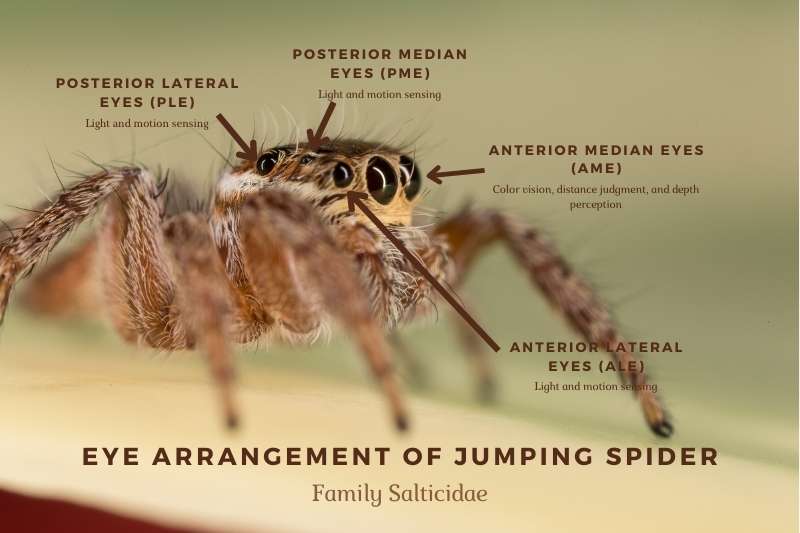
Spider eyes are made up of a corneal lens and the retina (among other structures). The cornea is transparent and focuses the image onto the interior retina, which responds to light. The intensity and pattern of light that strike the retina varies depending on the characteristics of the object within the eye’s visual field. The visual nerves recognize the variations in retinal cell stimulation and transmit the information to the spider’s brain, which ultimately identifies the object in question.
The primary Anterior Median eyes (AMEs) have an extremely complex four-layered arrangement of retinas. The retinas are pitted in the middle, which help to magnify the image transmitted by the cornea (Cerviera 2021). Unlike the fixed cornea, the layered retinas can shift closer to or farther from the cornea inside the eye. This ability to reposition the retinas and bring objects into focus without having to move gives jumping spiders telescopic, camera-like vision (Cerviera 2021).
However, the incredible visual acuity of the AMEs come with a trade-off; the field of view for the AMEs is extremely limited and restricted to the space immediately in front of the spider. Since all eight eyes are fixed in place and can’t pivot independently from the body like human eyes can, jumping spiders must turn to face whatever they want to see well.
This leads to the first of three hunting behaviors displayed by jumping spiders: Orientation.
To learn about the details of the other two hunting behaviors, check out my post “Jumping Spiders #4 – As Predators“.
Orientation consists of three smaller behaviors; “alert”, “swivel”, and “alignment” (Forster 1977). Whether a spider will perform all three behaviors or only alert depends on which eyes are stimulated first and the distance to the object of interest.
A spider alerts when the Anterior Median Eyes are the first eyes to spot the object of interest. It pulls its legs in closer to its body, straightens its front legs to lift its cephalothorax (presumably to get a better view), and freezes in this position for a second or two (Forster 1977). Anthropomorphizing non-human behavior is never wise but the alert posture really does suggest interest and rapt attention.
A spider swivels before assuming the alert posture when its secondary eyes sense movement to its sides or rear. Because the secondary eyes can’t see details, the spider bends at its “waist” to face the object and frame it within the AME’s field of view. Some jumping spider species can bend farther than others (Forster 1977) but ability to swivel side to side to improve visual acuity is characteristic of family Salticidae.
After alerting, a spider will turn its entire body to face the object of interest. The spider’s cephalothorax and abdomen straighten back out into line and the spider will reposition itself as needed to keep the object in view of the powerful AMEs.
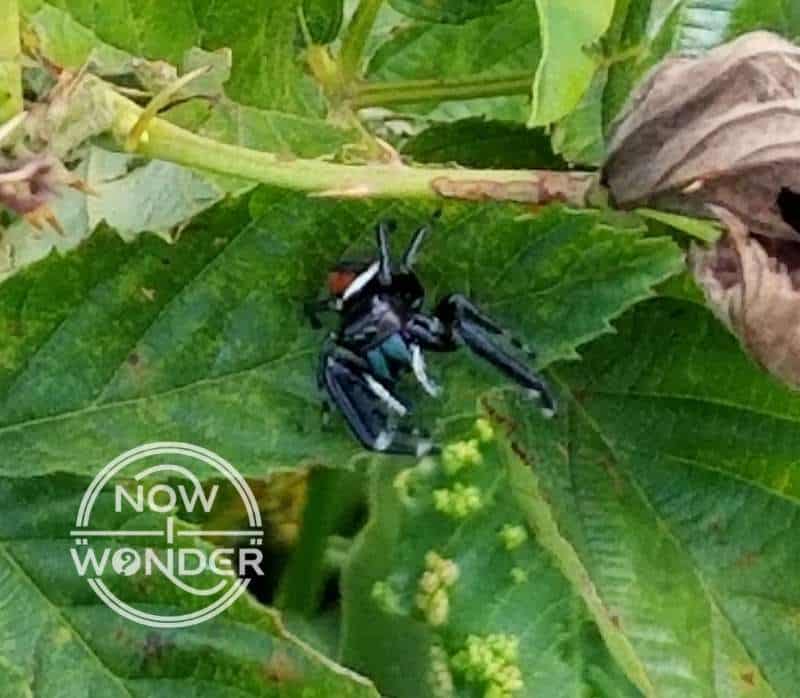
But a jumping spider will only align if it decides they’re looking at prey, another male, or a female; basically something that is not an immediate threat. If the spider identifies the object as a potential predator during the alert or swivel phase, it will simply flee.
Like humans, jumping spiders evolved excellent vision and lifestyles that capitalize on this acute sense to survive. Unlike humans, however, jumping spiders can not only see movement all around them, their Anterior Median Eyes act like telephoto lenses, zooming in or out to get a better view. If we humans want a closer look at something, we have to move our entire bodies closer. This means that while we can see jumping spiders just fine, they can see us better.
Classification of jumping spiders
| Kingdom | Animalia |
| Phylum | Arthropoda |
| Class | Arachnida |
| Order | Araneae |
| Family | Salticidae |
Related Now I Wonder Posts
For more information about spiders, check out these other Now I Wonder posts:
- What are wolf spiders?
- Jumping Spiders #1 – An Introduction
- Jumping Spiders #3 – A detailed look at a special skill: Jumping
- Jumping Spiders #4 – As Predators
- Jumping Spiders #5 – As Prey
- Are spiders bugs?
- Do spiders have teeth?
- Do spiders have blood?
For more information about spider relatives in class Arachnida, check out these other Now I Wonder posts:
References
Cerveira AM, Nelson XJ, Jackson RR. 2021. Spatial acuity-sensitivity trade-off in the principal eyes of a jumping spider: Possible adaptations to a ‘blended’ lifestyle. Journal of Comparative Physiology. 207(3):437-48. Available at: https://doi.org/10.1007/s00359-021-01486-2
Forster LM, 1977. A qualitative analysis of hunting behavior in jumping spiders (Araneae: Salticidae). NZ J Zool 4:51-62. Available at: https://doi.org/10.1080/03014223.1977.9517936
Shepeleva IP. 2022. A comparative analysis of the camera-like eyes of jumping spiders and humans. Vision. 6(1):2. Available at: https://doi.org/10.3390/vision6010002

